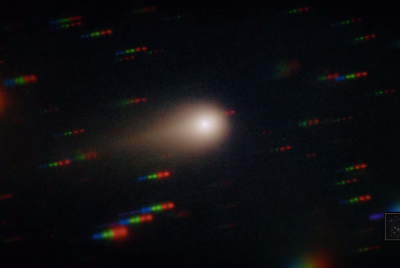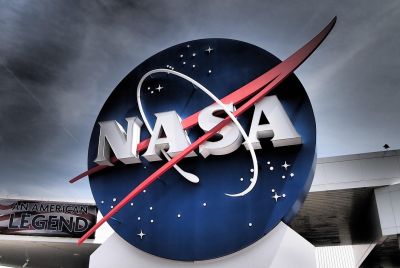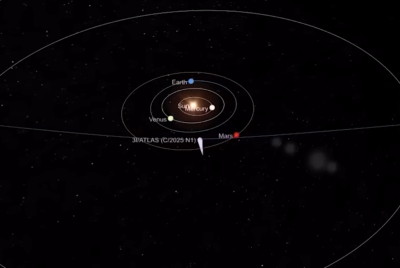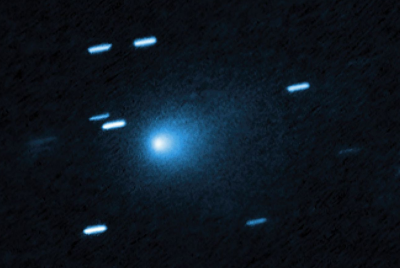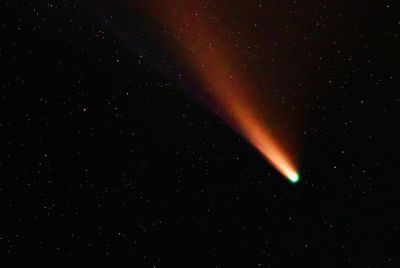3I/ATLAS Mystery Solved: Cox Reveals it's a Pristine Lump of Rock and Ice
Cox said that the 3I/ATLAS isn't an alien spaceship
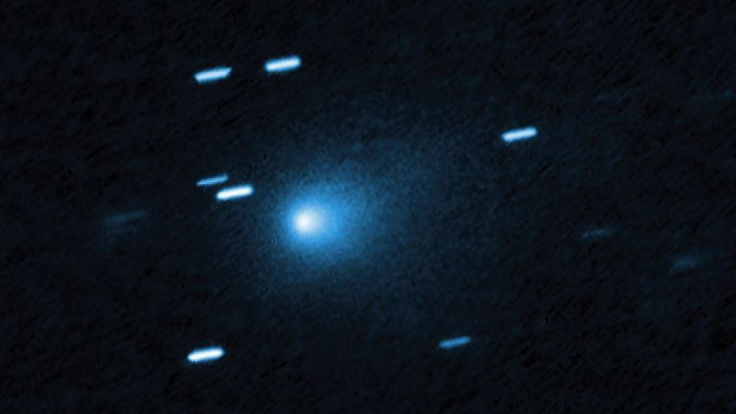
The world's fascination with 3I/ATLAS has finally met a scientific answer. Professor Brian Cox, a physicist from the University of Manchester, has declared that the mysterious interstellar object is nothing more than a 'pristine lump of rock and ices'.
3I/ATLAS was first detected on 1 July 2025 by NASA's Asteroid Terrestrial-impact Last Alert System (ATLAS) in Rio Hurtado, Chile. Its strange path through space puzzled experts and sparked viral speculation. Theories spread quickly online — from alien technology to government cover-ups. Cox, however, believes the mystery can now rest.
Theories About 3I/ATLAS
When 3I/ATLAS appeared, scientists were stunned. It became only the third known interstellar object, following 'Oumuamua in 2017 and Borisov in 2019. Its name comes from the telescope system that found it.
The object baffled astronomers due to its speed and direction. It came from outside our solar system and will leave again, never to return. NASA confirmed that 3I/ATLAS poses no threat to Earth and will pass about 240 million kilometres away.
Experts estimate it could be 7 billion years old — twice as old as Earth. As it nears the Sun, Hubble and the James Webb Space Telescope detected vapour jets escaping from its icy surface.
These are normal for comets, but the object's path caused confusion. The European Space Agency ruled out a mission, saying it was moving too fast and staying too briefly.
3I/ATLAS Not an Alien Spaceship, Says Cox
Among the loudest voices suggesting an alien link was Harvard astrophysicist Avi Loeb. He argued that 3I/ATLAS might be a technological artefact with possible intelligence. Loeb even described it as a potential 'black swan event', hinting it could be observing or testing humanity.
Brian Cox quickly dismissed such claims. Writing on X (formerly Twitter), he said the alien talk was nonsense.
'Just to be clear — given recent drivel online — Comet 3I/Atlas is a comet, made of carbon dioxide and water ices and bits of other stuff', he said via his official X post.
Just to be clear - given recent drivel on line - Comet 3I/Atlas is a comet, made of carbon dioxide and water ices and bits of other stuff. It is entirely natural in origin, its orbit is as expected and it will whizz around the sun and then disappear off into the galaxy again. If…
— Brian Cox (@ProfBrianCox) October 29, 2025
He added, 'It is entirely natural in origin, its orbit is as expected and it will whizz around the Sun and then disappear off into the galaxy again'.
Cox also thanked YouTube for removing fake videos using AI to make it seem he supported alien theories. In one post, he added that any video showing him agreeing with 'UFO nobbers' or 'flat earth bell ends' was fake.
Brian Cox Reveals What 3I/ATLAS Is
According to IGN SEA, Cox explained the science more clearly. He described 3I/ATLAS as 'a pristine lump of rock and ices which formed around a distant, maybe long-dead star billions of years ago and many light years away, just passing through'.
I keep seeing AI shite of me popping up on YouTube. The general rule is that if I appear to say something that you agree with and you are a UFO nobber, flat earth bell end or think comet ATLAS 3i is a spaceship, it’s fake.
— Brian Cox (@ProfBrianCox) October 28, 2025
He said its composition — mainly carbon dioxide, water ice, and dust — fits what astronomers expect from ancient comets. Cox stressed that nothing about its path suggests technology or control. 'Isn't that wonderful enough?' he added, calling it a remarkable natural traveller from another system.
Cox Hopes Other Intelligent Beings Are More Sensible
Reflecting on how humanity reacted, Cox shared a hopeful thought. 'If it ever encounters another inhabited solar system in the far future I hope the living things there are more sensible than us and enjoy it for what it is — a visitor from elsewhere in the galaxy', he said.
Cox's comments highlight his wish for curiosity over fear. While some imagined an alien takeover, science has offered a simpler, more beautiful truth — 3I/ATLAS is a relic from the deep past, quietly moving across the stars.
© Copyright IBTimes 2025. All rights reserved.






